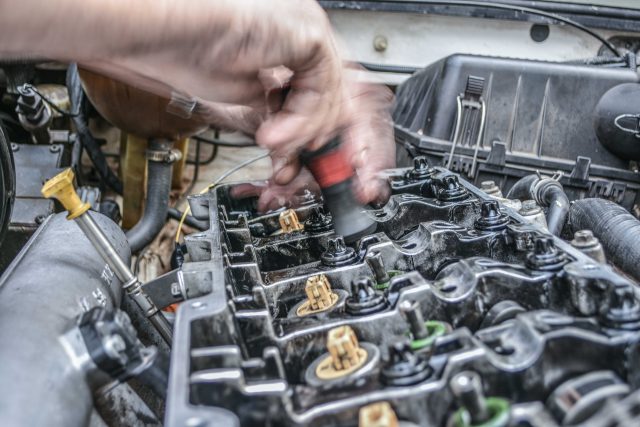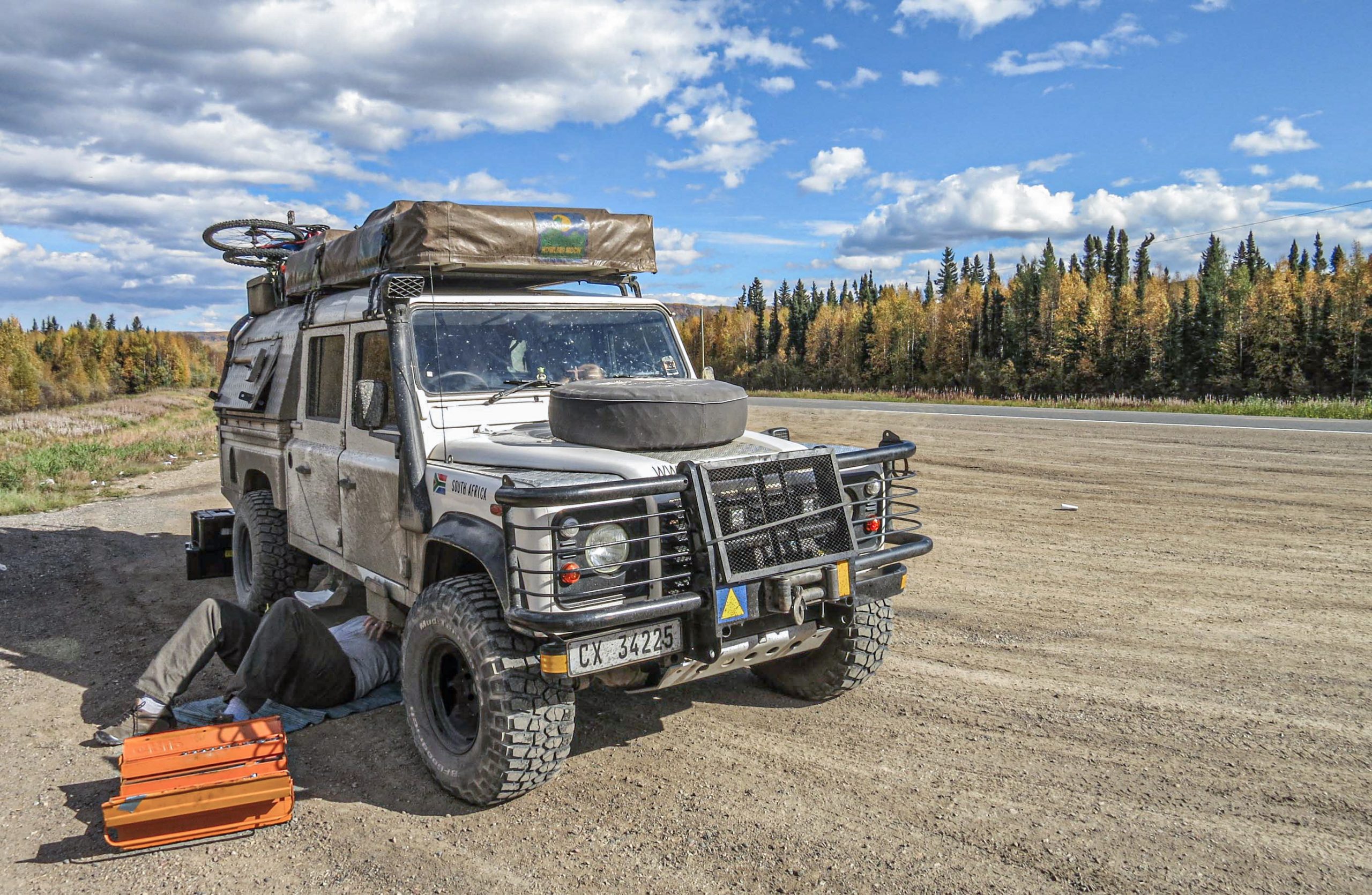An Argentine beauty once sold me a fan bearing which I was forced to change under the hot Bolivian sun at 12,000 feet. I almost did not achieve the repair because I lacked two tools: the other half of the two-part fan unique tool and a No. 12 Allen key. Now, I know you want to know all about the beauty so let’s get that out the way first so that you can concentrate. We were in the northern Argentine city of Cordoba, and I could hear that the fan bearing was very nearly fubar. To save time when parts hunting, I would drive the Defender to the parts store as directed by locals (this was before iOverlander and omnipresent internet), and Luisa would jump out and run into the store armed with a part number and a fistful of dollar equivalents. More often than not, she would return with both and no spare part.

On this mild sunny day in December, we drove to a corner that promised to be home to not one but two bearing specialists. The first shop had extensive SKF signage and could not help, the second store had humble signage, and Luisa returned within a minute. “Graeme, you want to give me a hand?”. The beautiful young woman was humbly dressed with no makeup and her long, dark hair tied back in a ponytail. She took one look at the part number and headed to the back of the large, well-stocked store before returning with the correct part. I queried the part number, and she assured me I needed to focus on the first (or last) digits. I paid, we left, and the part fit perfectly.

Before leaving Cordoba, I should have evaluated my tools and checked that I had all I needed. Instead, I winged it, confident that I had all the necessary tools, and paid the price. I had never removed the fan, but had carried the fan tool for years, half missing. I had a set of Allen keys (hex keys), but the largest was a No. 10; for the bearing replacement, I needed a No. 12. I could have also used a small butane torch but instead poured boiling water over the front of the block and then nudged in the bearing, which had been retracting in the freezer overnight. A job that might have taken a few hours had I had the correct tools instead demanded two full days, half of which was spent searching the town for a No. 12 Allen key.


I am not a mechanic but bore sole responsibility for fixing my vehicle and now have enough experience to know that I could do most repairs myself but, generally, still had a lot to learn. Remember, not all mechanics are created equal, and in many cases, you are indeed better off doing the repair yourself. Before departing African soil, I had asked a Land Rover mechanic with an identical brother which tools I should carry, and his excellent advice was that I should buy the best comprehensive tool kit I could afford and then invest in a few special tools and buy whatever else I needed when I needed it.

This advice was sound, as it is entirely possible to carry too many or too few tools, and the quality of the tools which you do carry will go a long way to determine how easy or complicated a job may be. A well-thought-out and maintained tool set is absolutely essential, particularly if you plan to head deep into the wild, far from competent workshops. With time, you will learn exactly which tools are most necessary and useful, and it may take a few years to complete your perfect toolbox.


Based on our experience, we suggest travelers should invest in a box or flat pack toolbox, which includes the following:
- Entire socket set relevant to your vehicle. If possible, have both 3/8- and 1/2-inch sockets and wrenches
- Set of spanners from size 7 to 24 (depending on your vehicle)
- Various screwdrivers, large and medium
- Allen key set
- Set of pliers
- You will likely find it necessary to have a secondary toolbox that will house more oversized items:
- Large adjustable wrench
- Ball-peen hammer
- Crowbar or tire lever
- Rubber mallet
- Axe (medium size is the most versatile)
- Machete
- Electrical tools
- Multimeter
- Electrical tape and wire
- Relays and fuses
- Grease
- Loctite
- Copper compound
- Filter wrenches
- OBD reader
- Duct tape

It is wise to research which specific tools are required for your vehicle. These may include:
- Hub nut socket or wrench. The Defender uses a 52-millimeter hub socket, and it is advisable to lathe the taper off the end for a flat fitment
- Fan removal tools
- Specific sockets
- Sump and drain “keys”
- Oversized Allen keys
- A brass drift (great for wheel bearings)
- Specialist screwdrivers

There will always be a pile of gadgets you are never quite sure where to pack. There are also those items you will always be looking for when you set up a long-term camp (by long-term, we mean five days or more). Our vehicle has a crate dedicated to these miscellaneous items and it is the most accessible crate. The contents include:
- Bottle jack and accessories
- Wheel spanner
- Cable ties
- Flashlight
- Tent pegs
- Tire repair kit
- Bungee cords and straps

I also like to keep a small tool bag handy in the vehicle; this tool bag or roll contains a few screwdrivers, long and short nose pliers, a small shifting spanner, 10mm, 13mm, and 17mm spanners (because we usually drive a Land Rover). And remember, never leave home without your trusty Leatherman!

Our No Compromise Clause: We carefully screen all contributors to ensure they are independent and impartial. We never have and never will accept advertorial, and we do not allow advertising to influence our product or destination reviews.


